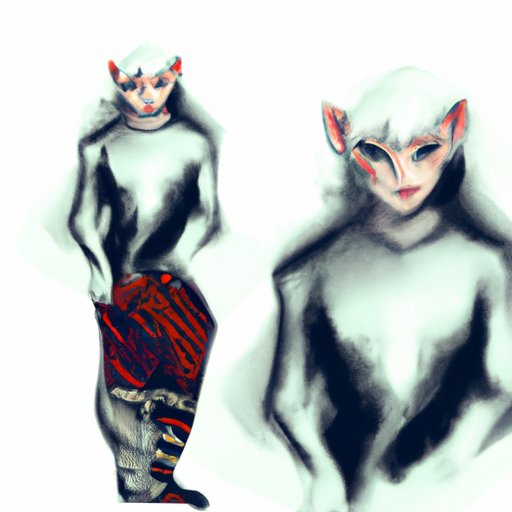
Introduction
Character design is an essential element in art, entertainment, and literature. Whether you’re an artist, illustrator, writer, or animator, creating unique and interesting characters is critical to making your work stand out from the rest. However, coming up with a design that has a distinctive personality, backstory, and appearance can be a challenging and daunting task.
But don’t worry! In this article, we’ll provide you with tips and techniques on how to create original and captivating characters. We’ll cover everything from the importance of sketching to the significance of using references. So, let’s get started!
Tips and Techniques for Drawing Unique Characters
When it comes to creating characters, experimenting with different features and body types is imperative. As an artist, you must be able to come up with unique, distinct, and imaginative characteristics that showcase your vision and skill.
Sketching is essential in this process; it allows you to refine and experiment with different concepts and ideas. Embrace your creativity; don’t be afraid to change things up or deviate from the norm.
Another critical element of character design is capturing the essence of the character. Facial expressions, body language, and clothing choices help bring a character to life and make them memorable. Consider the character’s personality, backstory, and environment to reflect the right emotions and mood. From there, you can use different design techniques to convey it.
The Importance of Character Design in Art
The proper character design is crucial in creating a mood, setting the tone, and enhancing the overall effect of an artwork. It helps convey the necessary information about the character and the world they inhabit.
For instance, certain design elements such as proportions, poses, and facial expressions can create a particular atmosphere or emotion. If you want to create an intimidating villain, you can make them taller, with sharper features like a slim nose and pointed chin.
On the other hand, if you want to create a cute and friendly character, you can use round shapes, such as circular eyes and soft curves for their body. This can conveys affability and warmness.
Turning Real-Life People into Characters
Characters inspired by real-life individuals are popular for several reasons. But getting the likeness can be challenging while still adding a personal touch.
The key to capturing a person’s personality is to exaggerate their unique physical features and characteristics. This amplifies the different aspects of their facial expressions and build while still keeping their avatar unique from the original.
Another strategy is to focus on the individual’s personality rather than their looks. What makes them unique? Their personality traits can be conveyed through their body language, choice of clothing, and other design characteristics.
Using References to Improve Your Character Drawing Skills
References are essential in creating a well-crafted character design. They provide a foundation to build upon while still allowing for a personal touch.
For instance, if you’re struggling to come up with the right proportions, finding a real-life model to use as a reference can be tremendously helpful. If you’re not sure what clothing is suitable for a particular setting, using historical or cultural references can provide the answer.
However, it’s essential not to rely too heavily on references. Using them too much may lead to a generic-looking character. To avoid this, use them purely as a guide rather than a blueprint.
Creating a Character Design Portfolio
If you’re serious about pursuing a career in character design or looking to improve your skills, creating a character design portfolio is an invaluable move. A portfolio showcases your best work, skills, and style to potential clients or employers.
First, it’s crucial to include a wide range of characters in your portfolio to showcase your skillset and range. Secondly, choosing your character design’s central theme is critical – you can select themes such as fantasy, science-fiction, contemporary, animals or anything else depending on your preferences.
The presentation of your portfolio is also essential in setting yourself apart from the competition. It’s essential to create a visually appealing and easy-to-navigate website or present the portfolio in a physically appealing format in a hard-cover book.
Conclusion
Creating unique and memorable characters is a challenging task, but it is an integral part of the art, literature, and entertainment industries. Using the tips, techniques, and strategies outlined in this article, you’ll be up to speed in creating captivating and distinctive characters that stand out.
Remember to take your time and sketch out different ideas, focus on capturing the personality of the character, and use references for inspiration instead of imitating. You can finally present your best works in a portfolio, which showcases your skills and style.




